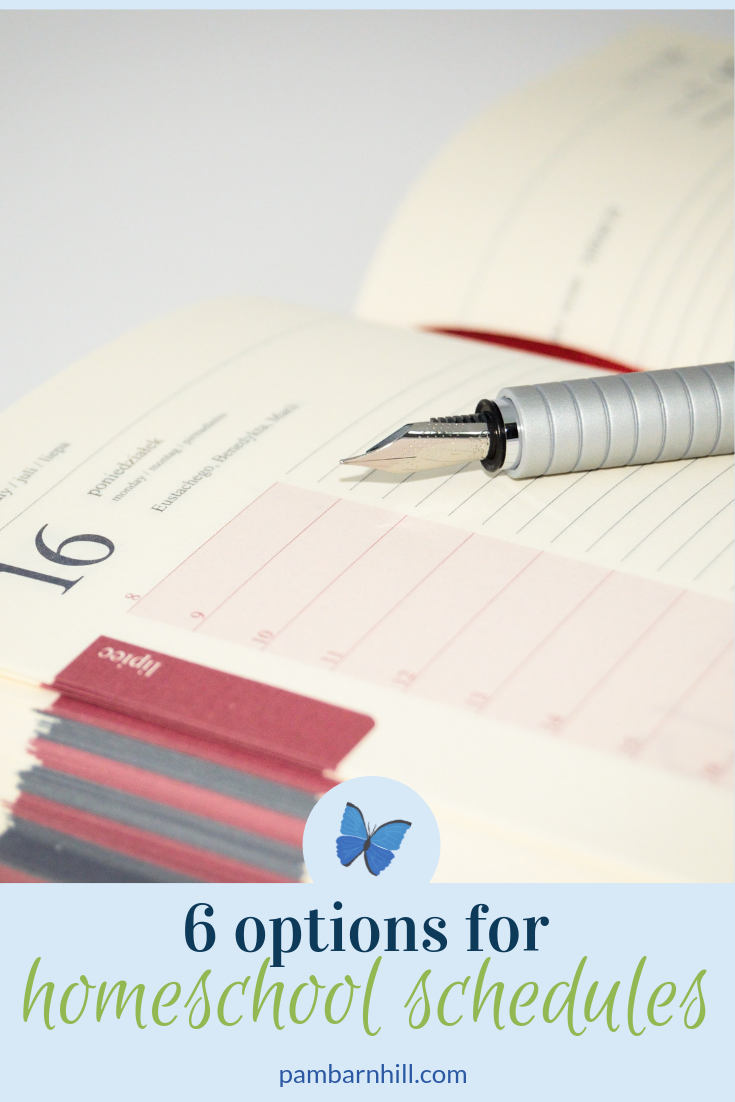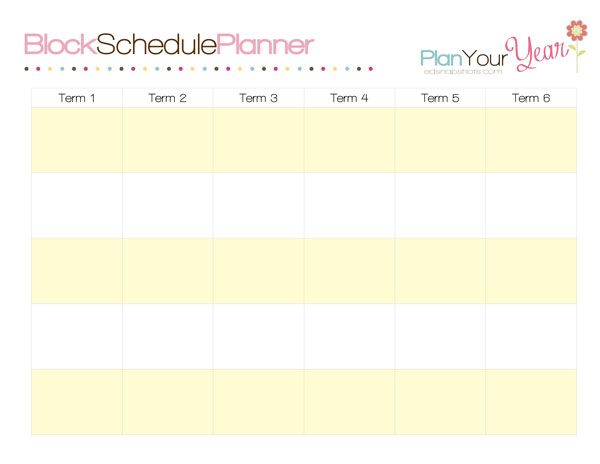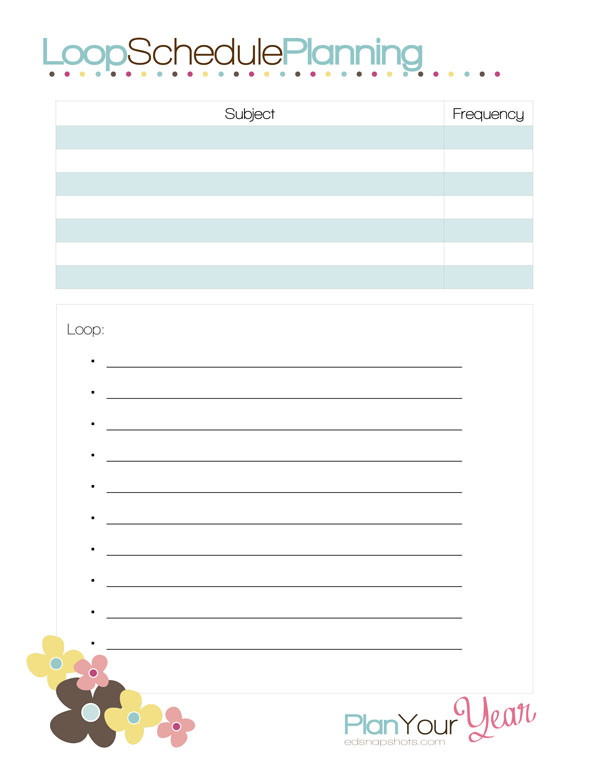This is part three in my Plan Your Year Homeschool Planning Series. Find the other parts here:
- Creating Homeschooling Goals for Growth
- Charting Your Course of Study
- How to Plan a Week and Sample Homeschool Schedules
- Get your free Plan Your Year homeschool planning pages here.
Homeschooling offers many different freedoms. There is freedom from door-to-door fundraisers, freedom from hours of homework, and perhaps most importantly, freedom in the school schedule.
While most states require a set number of school days, not a single state requires you to school on any specific day. Not having to follow the traditional school calendar gives a family an amazing amount of freedom.
For some families, like my friend Tyra’s, this could rank as the number one reason for homeschooling. Tyra’s husband works odd days and shifts, and their family loves traveling to visit relatives or their favorite vacation destination: Disney.
Homeschooling allows them the freedom to travel at off-peak times or simply to school on Saturday and spend time with Dad on Tuesday when he is off work.
Beyond just days off, though, homeschooling allows you to create an entire schedule that is best for your family.
How can you be sure that you are not so overwhelmed with work that learning is scarified? How can you best approach material — doing more subjects a day or fewer? How can you create a schedule that will allow you to teach the subjects you never seem to have time to complete?
Creative scheduling provides some answers. Let’s take a look at a few different homeschool schedule options.
1. Traditional Scheduling
This is the August through May schedule that most of us grew up with in the public school system. Based on the agrarian needs of early farmers, the method has stuck over the years.
There are advantages to schooling with a traditional schedule — you take vacations when the kids in the neighborhood and the cousins do, you can participate in all of the summer activities planned for vacation months, and you probably still get a nostalgic burst of excitement and energy every fall.
2. Year-Round Schooling
By tweaking the traditional schedule ever so slightly, many homeschoolers develop their own version of year-round schooling. This is what we have done at our house.
We take off the end of May, because that is when our swim instructor can schedule in our homeschool swim lessons. We remain off during the month of June so the kids can participate in day camps and vacation Bible school.
July, though, sees us getting grumpy and bored; Alabama summers are not the best for all-day outside play. So we usually start school right after Independence Day.
We school in the morning, leaving time for indoor activities at the library or craft store in the afternoon, and then swim as it cools in the evening. Starting early gives us plenty of days to take off in October and March when the weather is perfect for playing outdoors.
3. Calendar Schooling
My friend Chelli plans this way. She schools year-round, but she begins her new school subjects in January instead of August.
Chelli and her family take off the entire month of December and then, when the new year rolls around, they begin new content subjects like history and science. This gives them something interesting and fresh to push them through the doldrum days of February.
When they reach their halfway point of instruction at about July or August, Chelli has a promotion ceremony for each student in the fall to “promote” them to their next grade level (not necessary for homeschooling, but helpful for the kids to know for activities at church, etc.) and breaks out fresh, fun school supplies from the sales.
Once you have decided when to school, there are creative ways to break up the days and subject matter. As homeschoolers we are not required to complete every subject, every day, all year round. Here are some options to get us started.
4. Sabbath Schooling
Mystie uses a term system to determine not only her days off, but also to divide up subjects. She schools year-round, six weeks on and then one week off. Knowing that she has a break coming to catch up on house work or schedule large projects pushes her through the tough times each term.
Each term also contains different subjects. Mystie changes up her memory work and circle time content each term, but the variations on term work are endless. Never seem to have enough time for enrichment? Rotate art, Shakespeare, music appreciation, art appreciation, etc., each term.
What about science and history? Finding it hard to get to both in a week? Then schedule three terms of science in a row and then three terms of history. Your schedule is only limited by your imagination.
More about how I create a homeschool schedule can be seen in this YouTube video. If you can’t see the video, click here.
5. Block Scheduling
Similar to working in terms, block scheduling means you do fewer subjects, because you are not doing every subject every term. Blocks can be of any length — six weeks, ten, or a more traditional sixteen — but block scheduling means doing fewer subjects each day for a longer period of time.
Traditionally done at high schools or middle schools, block scheduling resembles a college schedule. A student might work on composition and grammar, history and math for one semester (about two hours a day each) and then the following semester their subjects would include science, an elective, and literature.
By the end of the year they would still have a year’s credit in the material because they had completed the number of hours needed for the credit — but by working longer hours for fewer months.
The advantage of such a system is that students are juggling fewer subjects at a time. Disadvantages are the amount of focus required to work on a single subject for a longer period of time, and the amount of time off for core subjects like math and grammar. Skills could be forgotten over such a long break.
6. Loop Scheduling
Loop scheduling is another variation that allows you to get to all of your subjects without feeling left behind. Homeschooling days are notoriously interrupted. Every week you manage to complete the subjects scheduled on Monday to Thursday, but for some reason those scheduled on Friday never get done.
How can we gain the advantage of the flexibility of homeschooling without constantly feeling behind in one or two areas? Loop scheduling to the rescue.
To create a loop schedule, you create a list of every subject you want to accomplish. Each day (or at the desired frequency) you set aside time to work on your loop. During that time, you simply pick up the loop where you last left off, work for the scheduled amount of time, and then stop for the day.
You may get part of one subject done — or two or three — but the next day you again pick up in the loop from where you left off. Unlike scheduling specific subjects on specific days, on this plan subjects don’t get skipped and you never fall behind.
How to create a loop schedule:
1. Decide which subjects to loop and list them. Some subjects, like math or other basic skill subjects, might still be done daily and not put into the loop.
2. Determine how many times you want each subject to appear in the loop. Example: You want to do science and art in the loop, but you want to do science three times for every one time you do art. Write a three next to science and a one next to art.
3. Build your loop list by plugging in each subject at its desired frequency. I like to insert my loop list into a page protector and check off as we get to each subject on the loop. After we complete the loop, I erase and we start again.
Should you do block or loop scheduling? Find out which one is right for your family here.
The most important thing to remember in building a schedule for your school year is to do what works best for your family. You are not bound by requirements beyond a set number of days, so do not be afraid to be creative and come up with a plan that allows for optimal learning and optimal family time.
Be sure to download your free homeschool planning mini-kit so you can get started at scheduling your days right now.
- Homeschooling Boys with Durenda Wilson - April 12, 2024
- What About Lab Sciences? with Dr. Moon - March 29, 2024
- Can I Teach Everything My High Schooler Needs to Know? - March 15, 2024





